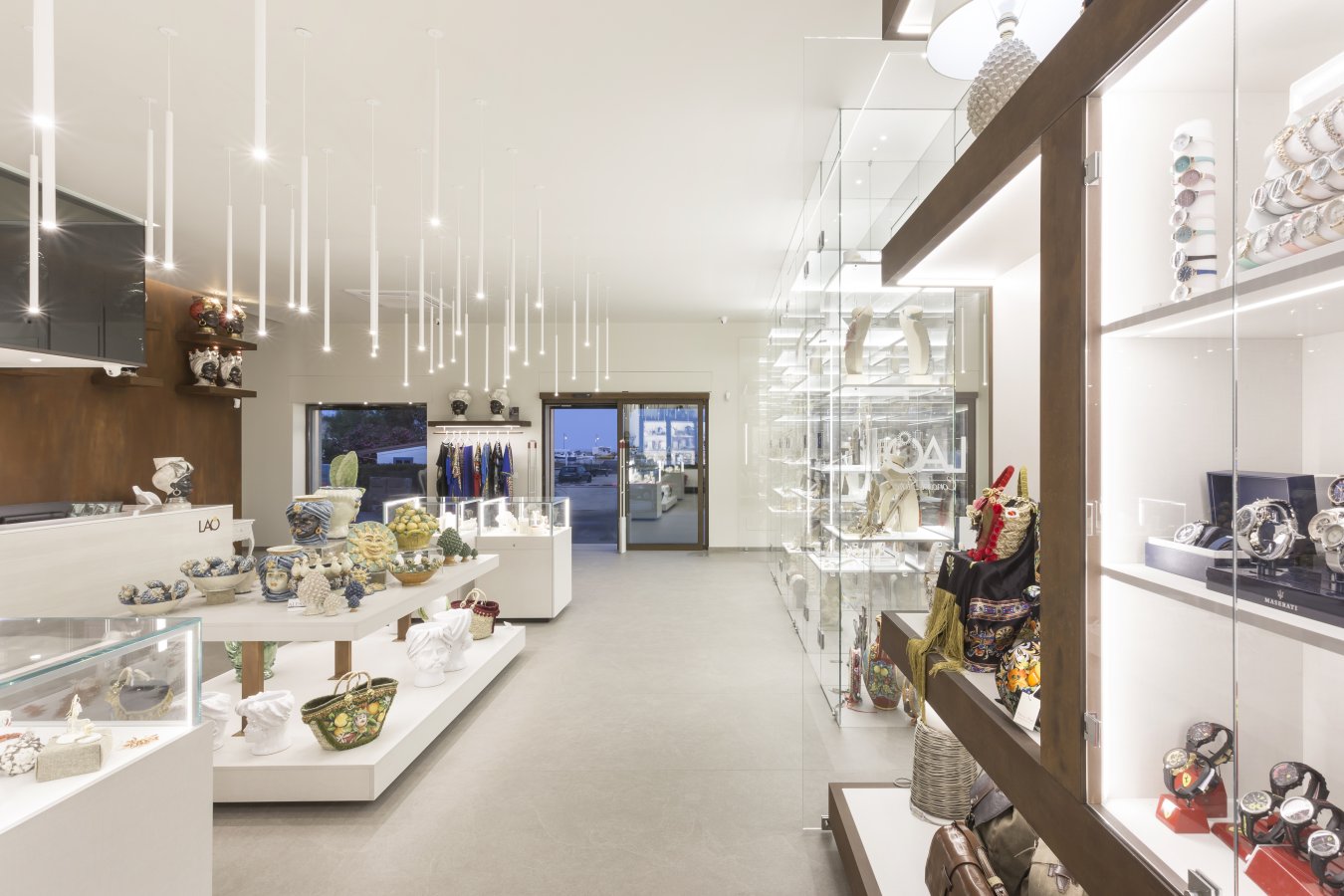Also known as the CRI, this value is important of the correct lighting for home furnishings, but also of a shop or other establishments.

Color rendering index (CRI) is the measure of how natural objects appear when illuminated by a given light source. This affects the combination of colors for home furnishings, but also the arrangement of objects and products in a store.
Choosing the lights and furnishings for your home or shop, in fact, affects the way in which the objects inside will be perceived by the eyes of guests and customers. Let’s see how to identify the color rendering index and use it to make your store look its best.
The color rendering index chart and what it is used for
The light intensity and CRI of each lightbulb, being it halogen or LED, must be calibrated on the type of environment that needs illumination. Starting from the bottom, the colour rendering index chart goes like this: :
- 20% suitable for workplaces such as excavations, construction sites, unloading areas.
- 40% is the best light for industrial environments, warehouses, workshops, and logistics centers.
- 60% is the most suitable class for corridors, elevator lobbies, passages, stairways, gym and service areas.
- 80% is the perfect solution for schools, offices, shops, stores and public lighting.
The situation is different for private homes, where the best lighting to enhance the combination of colors in the furniture is the one with a CRI index higher than 90.
Colour Rendering Index CRI and home decor
In home furnishings with preminent warm or cold colors, the color rendering index should exceed 90%. In fact this is the value suitable for lighting objects, decor and the entire space in the most natural way possible.
If you have carefully chosen the combination of colors for home furnishings, you certainly want these nuances to look their best. You can then cushion the atmosphere with fabric lamps whose lamp shade creates areas of soft light. The same goes for hospitality businesses such as restaurants and hotels.
A color rendering index of this type is even used in museums, precisely because it is the type of lighting that distorts the colors of objects the least. This way observers can perceive works of art, furnishings, fine floors and design objects in a natural way.
The color rendering index in stores
While the CRI of a house, restaurant or hotel is important to enhance the choice and combination of furniture colors, in a shop this choice becomes even more crucial. The arrangement of objects and products, in fact, is directed towards sales and should be enhanced in the best possible way.
Also in this case, the higher the value in the color rendering index chart, the more the objects will be seen in a clear and brilliant way by potential buyers. How then to enhance the store’s look with the right lighting?
Choosing high CRI LEDs (between 80 and 90) is definitely the best thing to do. Based on other parameters, then, you can choose between warm or cold light bulbs in order to create different atmospheres within the store or focus on dimmable LED lamps and change the intensity whenever you want.
What is the colour rendering index of LED lights?
Why is it that LED integrated lamps are increasingly chosen for homes, shops, restaurants and other spaces? The answer is simple: with LED bulbs the color rendering index is generally higher than analog ones.
Obviously then, this is not the only reason to prefer them. Business and home decor lights represent significant consumption, and these bulbs allow you to reduce spending while also improving the impact on the environment.
Companies like Axolight, which has promised itself to work towards sustainable lighting and more conscious consumption, are pushing for Italian design modern light fixtures that are compatible with LEDs for this very reason. The environment benefits from it, so do the lights of the home furnishings as well while the color rendering index is always optimal.
